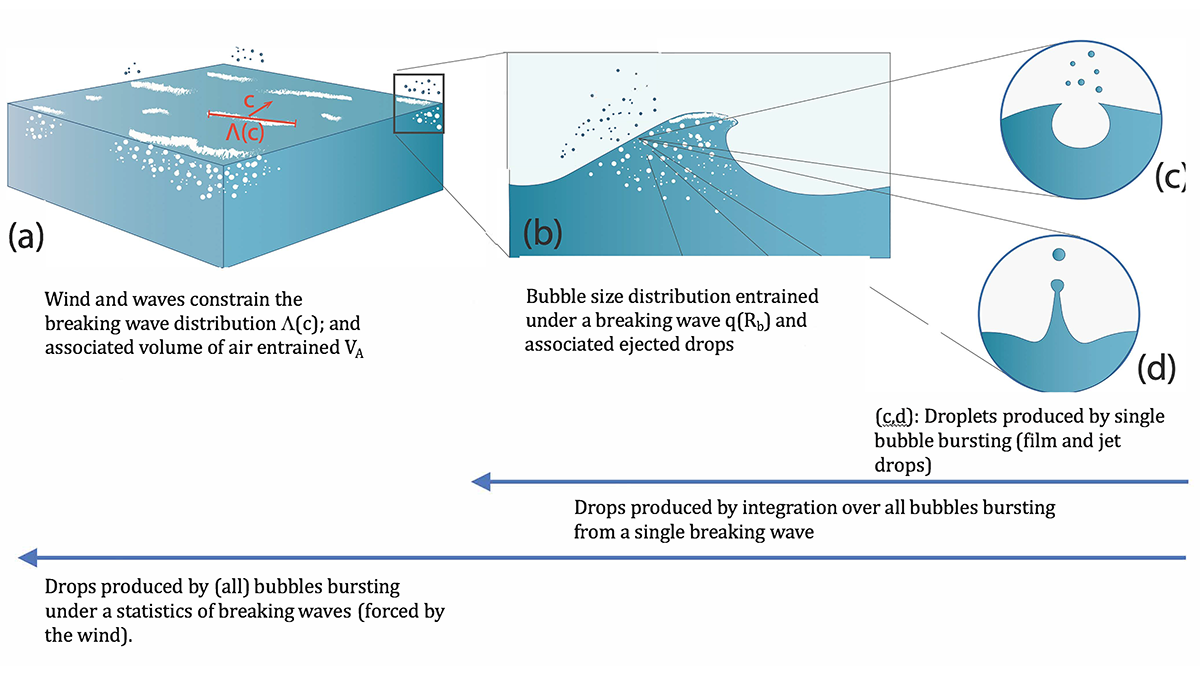Source: AGU Advances
Editors’ Highlights are summaries of recent papers by AGU’s journal editors.
Very large uncertainties in sea spray aerosol predictions remain despite playing a critical role in large scale atmospheric processes, from radiative balance to life cycle of clouds. The uncertainties are related to the large range of scales involved, and the complexity of the original production processes, including the dependencies on wind speed, ocean wave properties and water temperature. Deike et al. [2022] developed a mechanistic formulation for sea spray aerosol emissions caused by bubble bursting at the ocean surface by combining knowledge of individual bubble bursting processes, bubble statistics under breaking waves, and the distribution of breaking waves forced by realistic winds. The resulting sea spray aerosols emissions are in strong agreement with field observations for the magnitude of sea salt emissions and size distribution. This coherence with observations of sea salt emissions supports the mechanistic approach and paves the way for improved modeling of atmospheric processes controlled by aerosols of oceanic origin.
Citation: Deike, L., Reichl, B., & Paulot, F. [2022]. A mechanistic sea spray generation function based on the sea state and the physics of bubble bursting. AGU Advances, 3, e2022AV000750. https://doi.org/10.1029/2022AV000750
—Don Wuebbles, Editor, AGU Advances

